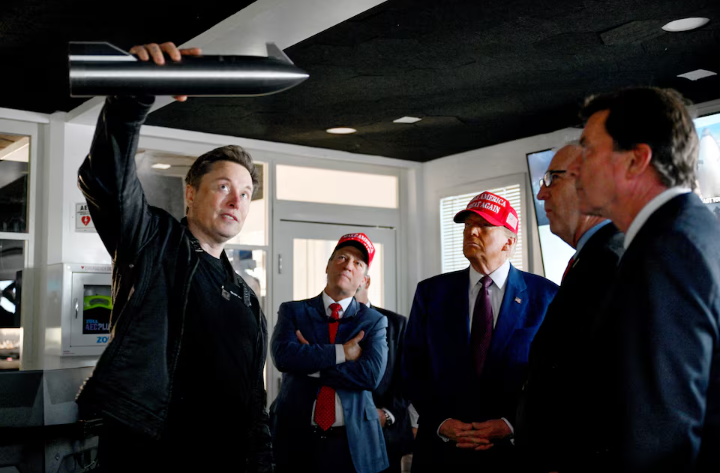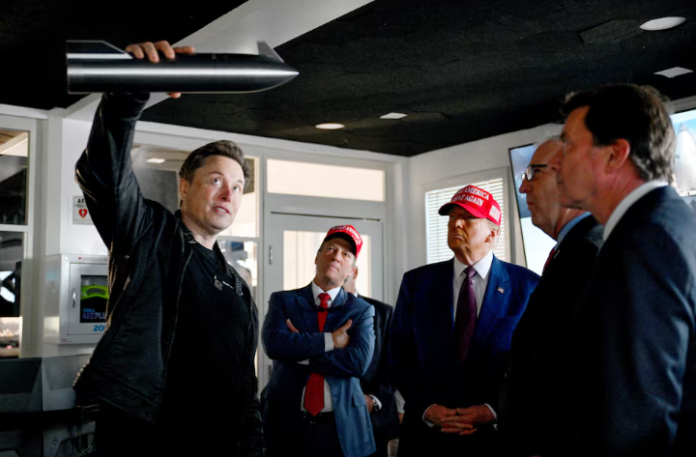In a major development that could reshape U.S. defense systems, Elon Musk’s SpaceX has reportedly taken the lead in a high-stakes bid to help build former President Donald Trump’s ambitious “Golden Dome” missile defense shield. According to six people familiar with the matter, the rocket giant is working alongside Palantir Technologies and drone startup Anduril to pitch the U.S. government on a futuristic defense project unlike anything seen before.
The Golden Dome, described in Trump’s January 27 executive order as a shield against “the most catastrophic threat facing the United States”—missile attacks—is still in its planning stages. However, SpaceX’s proposal is already generating serious buzz in the Pentagon and the tech world alike.
The trio—SpaceX, Palantir, and Anduril—met recently with top Pentagon and Trump administration officials to present their vision: a constellation of 400 to 1,000 satellites capable of detecting and tracking incoming missiles across the globe. A second fleet of 200 weaponized satellites, possibly equipped with lasers or missiles, would then neutralize the threats. While SpaceX is not expected to handle the weaponized satellites, its leadership in the sensing and tracking portion—the “custody layer”—is critical.
What’s turning heads isn’t just the size or scope of the project—but the business model. In an unusual twist, SpaceX has proposed offering the system as a “subscription service” instead of a traditional defense acquisition. This means the government would pay for access without outright ownership. It could allow faster deployment but has raised eyebrows about long-term control and costs.
The subscription approach sidesteps certain Pentagon procurement protocols and would allow the companies to roll out technology more quickly. Still, some officials are wary of depending on a pay-to-use model for something as crucial as national security.
Elon Musk, who now serves as a special advisor to Trump’s Department of Government Efficiency, has become a central figure in the defense-tech crossover. Musk has reportedly donated over $250 million to Trump’s campaigns and continues to influence policy decisions related to defense spending.

SpaceX is no stranger to satellite launches. In recent years, it has sent hundreds of Starlink and military satellites into orbit, which could give it a major edge in the race to secure a Golden Dome contract. Insiders estimate the initial design and engineering costs for the satellite network could reach between $6 billion and $10 billion.
If selected, the SpaceX-led team would deliver one of Silicon Valley’s biggest victories in the defense sector—disrupting the dominance of legacy contractors like Lockheed Martin, Northrop Grumman, Boeing, and RTX, all of whom are also competing for roles in the project.
Despite this potential breakthrough, questions remain. Can the SpaceX coalition scale up and deliver a working, cost-effective missile shield system in time? Experts say while SpaceX has the hardware and momentum, integrating new technology into a full national defense network is an unprecedented challenge.
With initial deployments expected as early as 2026 and full-scale functionality by 2030, the Golden Dome project is a race against time. And if SpaceX succeeds, it could forever change how America builds—and pays for—its defense.



